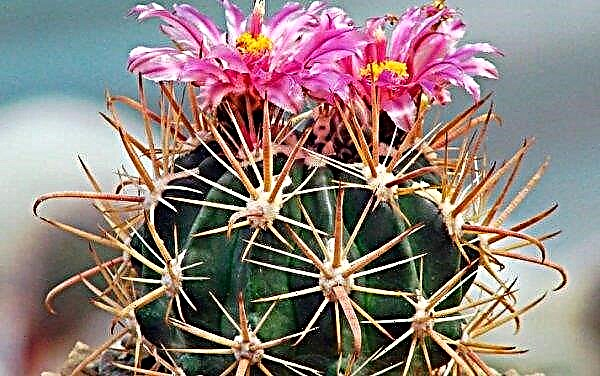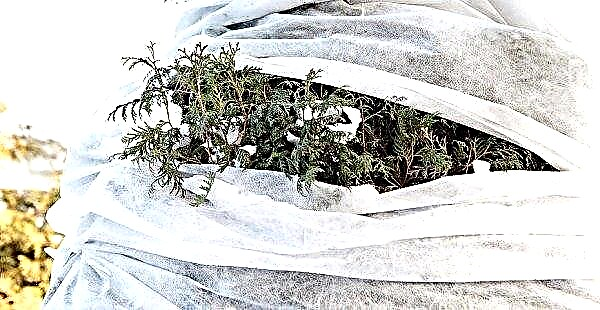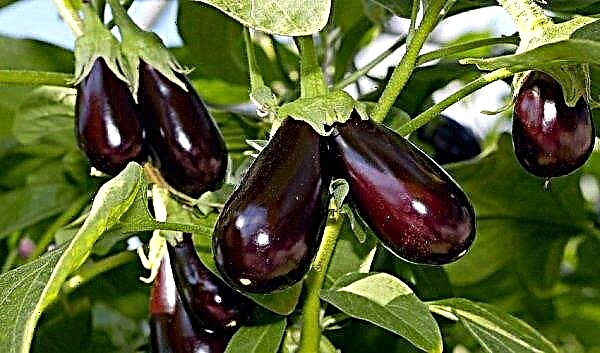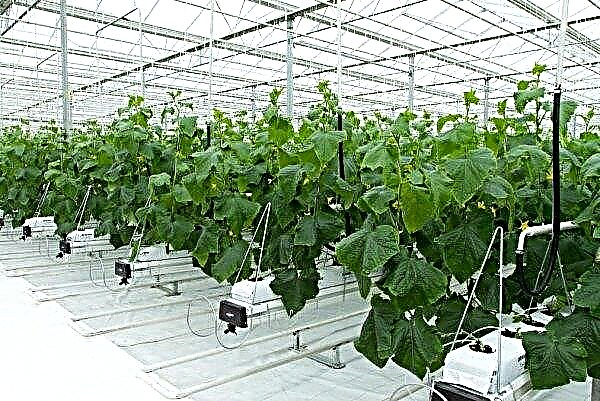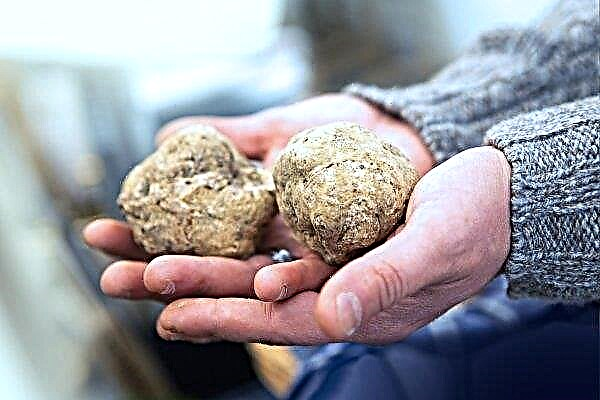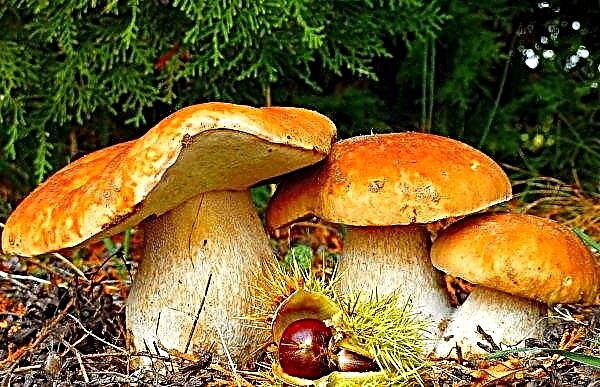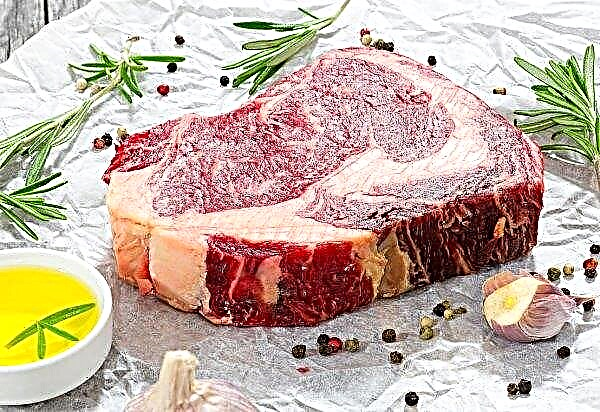Hydrangea Silver (Silver) The dollar is a variety for those who have little space for growing flowering shrubs. This small beauty is the owner of full-sized flowers, but on compact green shoots. In the middle of summer, they are covered with creamy white cones. For more information on planting Silver Dollar, see this article.
Grade description
Silver Dollar refers to panicled hydrangeas (lat. Hydrangea paniculata). This species is distinguished by a cone-shaped form of inflorescences - “panicles”. At the bud stage, they are greenish. Then, as they unfold, they become white.
Silver Dollar is an erect decorative bush with strong shoots on which dense, round-conical inflorescences are located. Most of the flowers in them are sterile, but there is also a part of the fertile ones. And if insects pollinate them, the gardener will receive seeds for reproduction. The young stems of this variety are green. In adulthood, they darken - they acquire a pink hue, and then turn brown. Hydrangea leaves are typically green. And the blooming panicles themselves, when they appear, are pale green, then turn creamy white.
Description of the features of the variety Silver Dollar:
- botanical name: Hydrangea paniculata Silver Dollar;
- breeder: Peter Zweinenburg (Holland);
- awards: AGM Prize of the British Horticultural Society in 2008;
- shrub size: perennial, medium-tall, 1–1.3 m high, 1–1.8 m wide;
- leaves: oval, slightly pointed, dark green;
- the flowers: vary from light green to almost pure white, becoming very light pink in late summer and early fall;
- shoots: dark raspberry brown with age;
- growth rate: high;
- bloom: from July to October;
- frost zone: 6 (minimum winter temperature -34 ° C);
- lighting: sunny area or partial shadow;
- the soil: qualitatively drained, preferably rich in humus, moist, not too heavy;
- acidity: any;
- nutritional benefits: Fertilizing increases the size of the flowers;
- pruning: in the spring, before budding.
Landing rules
To plant a hydrangea bought in a nursery, you will need to cook:
- peat, humus or rotted manure - to increase soil nutrition;
- sand, if you need to dilute heavy soil;
- gravel or pebbles for drainage;
- wood chips, sawdust or needles for a mulching layer;
- shovel, garden hoe.
Video: Planting panicle hydrangea
Site selection and preparation
Silver Dollar will grow on almost any type of soil, but it is better if it is rich in nutrients. The site may be in the sun or in partial shade. For example, in the morning the sun completely illuminates it, and after lunch the shadow from the trees falls.

The site is dug up, stones, weeds are removed. Also pay attention to the roots of the trees: if they are there - move the hydrangea to the side. The weak root system of a young seedling will not be able to compete with the root of the tree in obtaining moisture and fertilizers, and as a result, hydrangea will grow weak and painful.
Given the width of the adult bush - 1.8 m, between trees adjacent to it and bushes should remain another 0.5-0.7 m. When planting against the wall - 0.5 m.
Important! If there are strong winds in your area, then you need to protect the bushes from them by planting so that hydrangea is protected by a hedge, fence or conifer.
Pit preparation
At the site, prepare a pit. In size, it should be 2-3 times larger than the roots of a seedling. Dilute the removed soil with sand, if it is dense and clay, and add organic fertilizers in equal proportions.
Hydrangea planting:
- Pebbles or other type of drainage are laid on the bottom of the pit. The thickness of such a layer should be about 15 cm.
- A prepared substrate is poured over it.
- Set the seedling.
- Fall asleep with the remaining soil.
- After the work is completed, lay a layer of mulch from the bark, sawdust, chopped straw or other material. It will inhibit weed growth and drying out of the soil.

After landing care
When the bush is planted safely, it will need watering, fertilizing, and the prevention of diseases and pests. It may also periodically require pruning at the end of winter, harvesting leaves in the fall, or preparing for wintering.
Watering
In the first year of growth, the seedling is provided with regular watering 1-2 times a week. The soil must be constantly moist so that a not too developed root system can reach a source of moisture. In subsequent years, weekly irrigation will be sufficient. Adult hydrangea needs moist soil, but it should not be excessively wet, so when planting, they must create a drainage layer in the planting pit. The norm of watering an adult plant is 2-3 buckets of water per week for each bush. It begins in the spring, and ends in the fall in October, when yellowing leaves showered.
 If you can not pay much attention to watering, then to maintain moisture you can add hydrogel to the near-stem soil. It accumulates moisture during irrigation, and then gives it to the soil
If you can not pay much attention to watering, then to maintain moisture you can add hydrogel to the near-stem soil. It accumulates moisture during irrigation, and then gives it to the soil
Top dressing
If fertilizers are applied during planting, then in the first year of seedling development, nothing needs to be added.
But if the soil is very poor in nutrients, you will need to feed the plant with fertilizers in the amount of:
- 100 g of superphosphate;
- 50 g of potassium sulfate;
- 50 g of kalimagnesia.
Top dressing is carried out after planting, and then after 1-2 months is repeated.
Adult plant also needs to be fed. But before you begin, you need to visually assess the need of the bush for this. If many shoots are formed and they grow well in size, then there is no need to fertilize. For example, an excess of nitrogen causes intense foliage growth, but few flowers will form.
Gardeners offer the following feeding scheme for adult hydrangeas:
- In the spring, add nitrogen, necessary for the development of leaves and shoot growth. 150 g of ammonium nitrate may become its source.
- In May, when inflorescences appear, add potassium sulfate and superphosphate - 50 g each. These substances are needed to maintain photosynthesis, support flowering and root system development.
- In the fall, fertilize with organic fertilizers based on rotted chicken manure or manure.
- Each feeding is accompanied by watering shrubs. This improves the absorption of nutrients.

Pruning
Hydrangea does not need to be pruned, but faded inflorescences are removed - this makes the bush tidier and leaves no room for propagation of pests, and also stimulates the development of new peduncles. Pay attention to the intensity of pruning: if you cut too much, then blooming inflorescences will be few, but they will be large. An increase in the number of branches leads to the fact that the inflorescences become smaller.
Sanitary pruning is carried out in late February: at this time, dried shoots and those older than 3 years are removed. If the bush is thickened, then it is worth removing those that create shading and density inside the bush. Before starting work, the cutting edges of the tool are wiped with alcohol. If there are several bushes, then before you start pruning the second, you need to wipe them again so as not to transfer pathogens from one plant to another.

Reproduction of the variety Silver Dollar
Flowering plants propagate by seed. This is especially important for breeders, as they get new varieties by pollinating flowers on one shrub with pollen from another.
But since there are few seeds formed on hydrangeas, gardeners use the following methods of reproduction:
- cuttings;
- layering.
Important! A gardener from Belgium Stefan Westcott-Greatton recommends adding mushroom mycorrhiza to the soil in which hydrangea grows. It will contribute to the growth of the root system and the development of the bush.
Cuttings are carried out at the end of June, acting as follows:
- First, choose a young branch. It must be cut and divided into parts of 13-15 cm. On each of them should remain several internodes; leaves are removed from the bottom.
- The end of the handle is dipped in a growth stimulator and planted in a prepared container. The substrate for it is prepared from peat, sand and turf land, taken in equal quantities.
- The soil is moistened, the container is covered with polyethylene, but so that it does not touch the leaves.
- The container is installed indoors so that direct sunlight does not fall on it. The air temperature should be between +17 ... 20 ° С.
- While the seedling will take root, you need to keep the soil moist.
- Then the film is removed and a young plant is grown in a pot until it is planted in the soil the next year.
Propagation by layering implies that you can take a branch of a bush, bend it to the soil and fix it with a metal bracket. Then fill it with earth and pour over it. Each internode can take root and several new bushes will be obtained from one branch. The following year, they can be cut off from the mother plant and planted separately.
Diseases and Pests
Hydrangeas rarely get sick, but improper growing conditions can lead to diseases. So, excessive watering becomes the cause of putrefactive processes, and thickening contributes to the spread of insect pests and fungal diseases. If you water the plant correctly, providing it with enough sun and air, this will help maintain its health.
The main problems of hydrangeas:
- Bright sunlight can cause leaf burn. This is especially true if they were wet after watering. Therefore, it is recommended to plant hydrangeas so that in the hottest moments of the day they are shaded, and do not water them at this time.

- If the leaves turn white, discoloring, then this chlorosisthat occurs due to lack of iron. Feed this bush with Ferovit or Antichlorosis.

- Excessive watering produces rot. To treat hydrangea, it is necessary to normalize the irrigation regime and treat the bush with Fitosporin or Fundazol.

- Powdery mildew - a fungal disease that affects the bushes if wet and cool weather is established. Her symptom is a white-gray coating on the leaves, similar to flour. For treatment, the infected parts of hydrangea are removed, and then sprayed with Skor, Fitosporin or Topaz.

- Septoria - Another fungal disease in which brown spots are formed on the leaves and light yellow around them. The plant must be treated with a 1% solution of Bordeaux fluid or another copper-based fungicide.
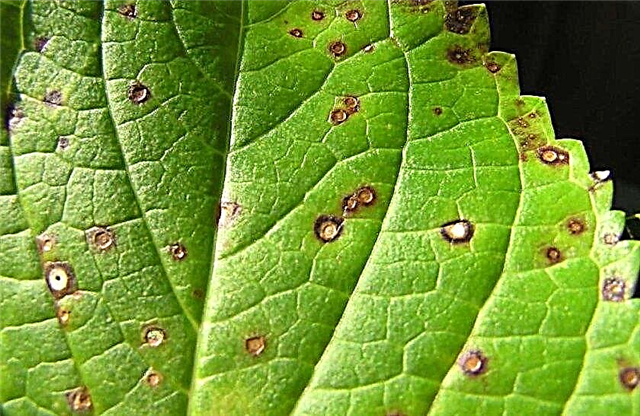
For the first time, bushes can be treated with copper-based preparations in early spring, before buds open. This will serve as a prevention of fungal diseases.
Did you know? In Victorian England, hydrangea was associated with boasting and vanity. After all, this bush gives many flowers, but very few seeds.
As for insects, there are many of them in the garden. For a strong and healthy bush, they are not dangerous. If the bush is weakened, then it must not only be treated from pests, but also fed, adding 1-2 kg of rotted manure for each plant.
The main garden pests of hydrangea:
- Aphids - small black insects that settle in colonies on leaves and cuttings. If there are few pests, they are simply washed off with a stream of water. In other cases, spray with a solution of water with insecticidal soap (15 g / l).
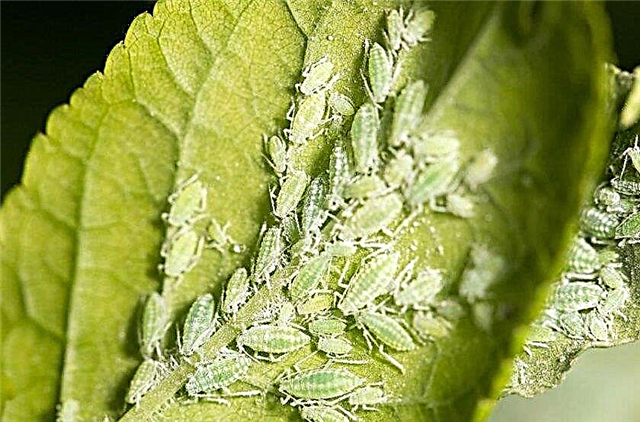
- Spider mites - parasites up to 1 mm. They settle on the underside of the leaves. Like aphids, they suck juice. As a result, many tiny holes remain on the leaves. Treatment from ticks is carried out by Fitoferm or Akarin.
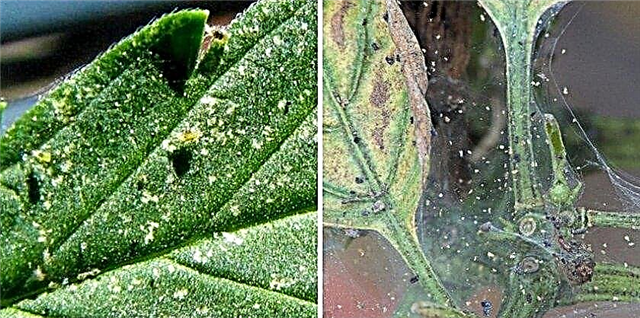
- Slugs and Snails enjoy fresh foliage of hydrangeas and other plants. To combat them, farmers sprinkle row-spacings with crushed shell rock or use Molluscocide.
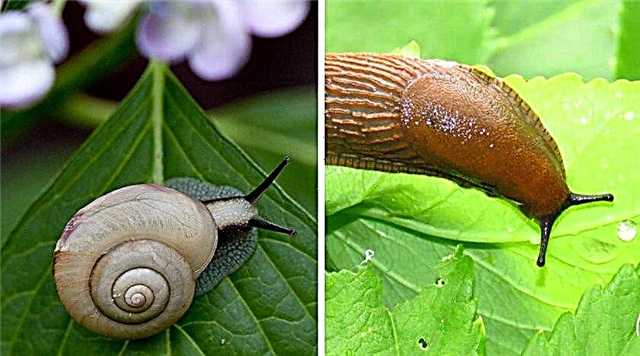
Is it possible to grow on a stem
A stem is a form of plant in which the bush is shaped like a tree. It can be given to those plants that are able to branch. The genus Hydrangea has two such species - tree-like and panicled.
Creating a stem will consist of the following steps:
- Plant hydrangea.
- Place a support post next to it and tie a central shoot to it. The rest you need to pinch.
- The upper point of growth is also pinched to a well-developed kidney. As a result, several shoots are formed there instead of one.
- Next year, you need to remove the lateral processes, if they appear on the central trunk, and pinch all the branches on the crown. After that, they fork again.
- Thus, each subsequent season will branch out until the plant creates a lush crown. So that it has the shape of a ball, you need to trim it, cutting off too long shoots.
Did you know? Some types of hydrangeas respond to soil acidity by changing the color of the flowers. These include large-leaved hydrangea (Hydrangea macrophylla). Her flowers turn blue in acidic soil and pink in alkaline.
A tree is formed 3-4 years after planting, due to branching. Caring for it is no different from caring for an ordinary bush, but you need to pay attention to its formation. Otherwise, hydrangea will return to its usual bush form.

Silver Hydrangea bushes are very attractive, and in addition, not too demanding to care for. If you like flowering shrubs, try planting them in your area. With good watering and top dressing, they will delight you with flowers for most of the summer.









